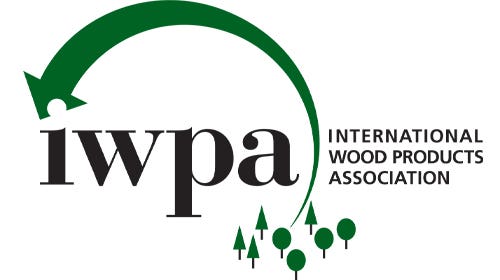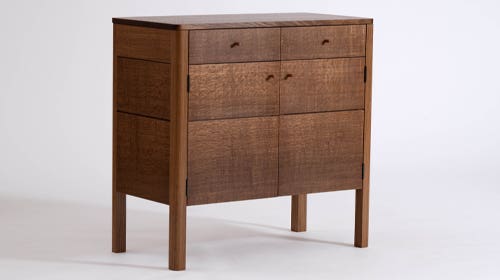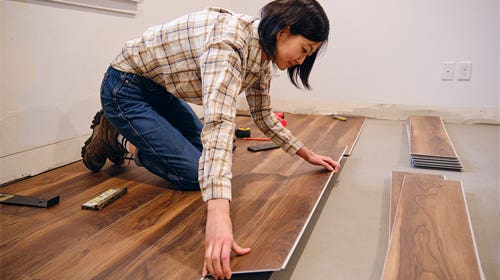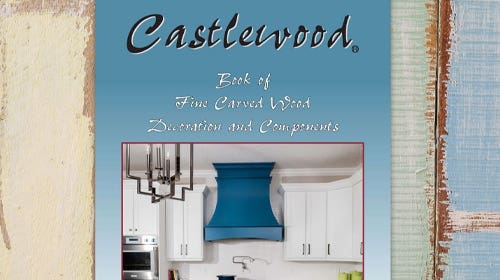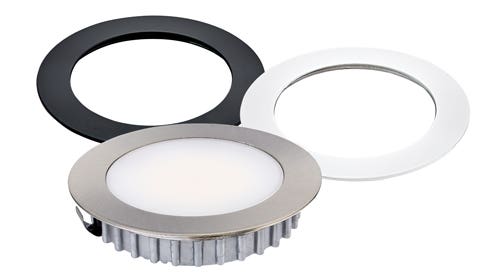Quartersawn white oak demand is steady
One of the moderately bright spots in the domestic wood market is the upper grades of white oak, more specifically, quartersawn white oak. Retail dealers contacted by Woodshop News indicated…
One of the moderately bright spots in the domestic wood market is the upper grades of white oak, more specifically, quartersawn white oak. Retail dealers contacted by Woodshop News indicated that demand for quartersawn white oak is solid and represents as much as 90 percent of their white oak sales.
“Our white oak sales are very steady; it’s always a real popular wood,” says John Greeley of Northwest Lumber, a retail and wholesale supplier in Indianapolis. “A lot of customers are building Stickley-style furniture and stuff like that. They buy 4/4 and 5/4, FAS grade, and we stock it in 8' pieces in random width boards. Quartersawn boards are much more popular, probably 10 to 1; that’s what most people are asking for.”
White oak (Quercus alba) grows from eastern Canada, south to Florida and Texas, and throughout the Midwest. The tree reaches heights up to 120' with a trunk diameter of 2' to 3'. The narrow sapwood is white to light brown in color, while the heartwood ranges from light to dark brown. Quartersawn lumber often produces bright flake patterns that are sometimes referred to as butterfly or tiger ray.
Sam Talarico, owner of Talarico Hardwoods in Mohnton, Pa., has specialized in selling old-growth white oak for more than 30 years. Most of his white oak is imported from forests in Germany and old European estates since the domestic supply has all but dried up.
“I’m a high-end specialty guy, and the white oak is moving normally for me, because it is the high-end jobs that are using this stuff,” Talarico says. “My calls are pretty much on target, but I’m a little slower than I should be.
“The Arts and Crafts guys want the flake, and the flake is where the wider boards are. But 10" quartersawn white oak is [tough] to get in production lumber. It comes at a premium, and there is little of it. I get calls all the time for wide stuff, and it just isn’t available in any quantity out there in production-cut lumber.”
“We sell quite a bit of the quartersawn, and we’ve done a couple projects recently where we’ve used it in manufacturing,” says Dave Harris of Parkerville Lumber Products, a lumber dealer and millwork shop in Manchester, Conn. “To me, it seems to be a popular choice right now. We sell mostly to furniture makers; Mission style seems popular now. We sell the plain white oak, but right now the quartersawn is more popular in thicknesses up to 8/4.”
Harris has done several projects during the last two years for Marist College in Poughkeepsie, N.Y., using quartersawn white oak, including remodels of the president’s office, the college boathouse and other buildings.
White oak is also known as American white oak, Arizona oak, forked-leaf white oak, Louisiana white oak, Mantua oak, ridge white oak, stave oak, true white oak, and West Virginia soft white oak, according to the USDA Forest Service’s Center for Wood Anatomy Research at the Forest Products Laboratory in Madison, Wis.
“People think white oak is very hard and it’s heavy and difficult to work with, and they’re right if you get the low-grade white oak, fast-grown stuff,” Talarico says. “But if you get good white oak, grown anywhere in the world, if it’s grown in the right place and the right soil, it’s beautiful to work with. It cuts nicely; it’s got a vertical grain, and rift- and comb-figure white oak has a very contemporary clean look, a warm color. It’s just nice to work with and almost goes with anything. I just think it’s a wonderful wood if you get good quality white oak.”
White oak has a course texture, is usually straight-grained, heavy, strong and durable and has a specific gravity of .60. Generally, the wood is easy to work with; it machines and glues well, is easy to carve, takes a fine finish, but tends to split when nailed. The wood dries fairly slowly and may occasionally check or crack.
“When I started doing this 30-some years ago with white oak, I often thought, ‘I wonder how long this trend is going to last,’ ” notes Talarico. “Am I going to be stuck here with a white elephant some day after I really build the market up and learn it all? But it still is in play here; it got better and better when the Mission stuff started coming out. Most of the phone calls I get now are for big jobs. Over all these years, the rift and the quartered white oak are still, for some reason, consistent in popularity.”
Retail prices for kiln-dried, 4/4 FAS flatsawn white oak, surfaced on two sides, ranged from $3.60 to $4.25/bf in the Northeast; $3.40 to $3.80/bf in the Southeast; $3.50 to $4/bf in the Midwest, and $3.75 to $4.10/bf in the West.
Retail prices for 4/4 FAS quartersawn white oak were approximately $1.50 to $2/bf higher. The price for 4/4 FAS old-growth quartersawn white oak ranged from $12/bf to $19/bf.
Wholesale prices for kiln-dried 4/4 FAS white oak ranged from $3,200 to $3,600/mbf in the Northeast; $2,950 to $3,400/mbf in the Southeast; $3,200 to $3,400/mbf in the Midwest, and $3,400 to $3,750/mbf in the West.
This article originally appeared in the April 2009 issue.


